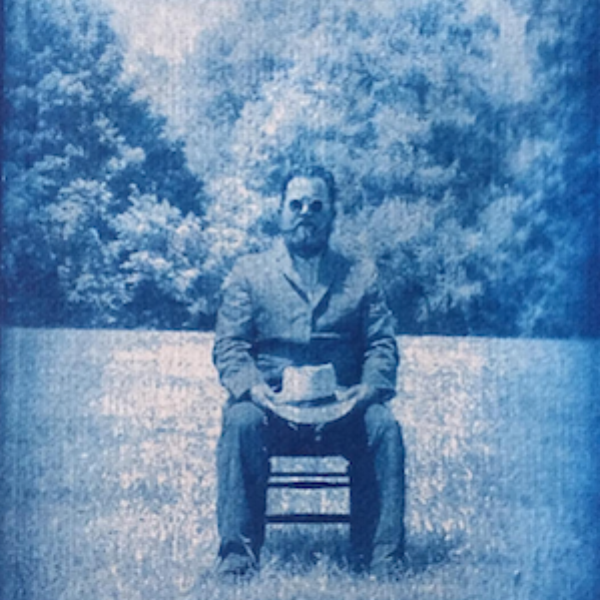Know Your Place
On Friday, October 5, the Harrison Center presents Historicity, new work by artist/historian Kipp Normand that highlights the good, the bad and the ugly of the history of Indianapolis. We sat down with the utterly charming and always informative Mr. Normand to talk about his inspiration for this new body of work.
When approached about doing a show focused on the history of Indianapolis, Normand thought it a particularly interesting notion given the growing number of people who live here who don’t seem to have a sense of where they are. He told us that this show will be an exhortation for people to get out and explore the city as if they were a very curious tourist. “Go someplace you’ve never been! Canoe the White River or explore a parkway by bicycle! Knowledge of a place’s history and the things you see as you drive, walk, bus, or bike around, will greatly enhance your experience. Consequently, if that place is your home, understanding it more deeply helps you to know your place in it.”
Normand shared that when he first arrived to Indy, he imagined that he would touch down here for maybe five years and then move on. Back then, there was a lot of talk of the “brain drain” and how Indy would need to make some changes if it wanted to retain young talent. Fast forward 30 years or so and Normand marvels at the influx of people flocking to the city, taking up residence in the condos and apartments that seem to pop up daily. The impact of the cultural trail, development of the cultural districts and more have gone a long way to attract a new generation to the city. Normand wants to help people to know their city well.
He is asking people (imploring them, really) to look around and ask, “How did this get here?” and “Why is this the way it is now?” He hopes these questions will lead people to take advantage of the rich resources we have here. Of course, there is endless information available online that can teach about a city’s history. Right here, we have wonderful organizations like Indiana Landmarks and the Indiana Historical Society that often have programming specifically focused on the history of Indianapolis. The website Historic Indianapolis is a also a fantastic resource that investigates quirky and interesting places in the city. Much of its content is directed by people mailing in inquiries about curious places. Then staff historians research and write “investigative” pieces. He reminds us, “The history of Indianapolis is full of wonderful, challenging, thought-provoking, sometimes beautiful, sometimes ugly things and knowledge of that history can enrich our understanding of contemporary Indianapolis.”
Normand talked about how in the late 19th century there was a heightened interest in culture with great value placed upon arts and literature. The architecture of the city was inspired by European cities. As industrial development and population increased, leaders in the community were committed to people being educated and having opportunities across the board. The public school system and library (models for systems in other parts of the country) fed a wonderful culture of inventiveness. This was a town of tinkerers–people building and creating new ideas–and this could be seen in the growth of the auto industry, pharmaceuticals, agriculture, and food processing (the canning business was huge).
But after World War I, there arose an air of suspicion and a break down of community. There was increasing demand for segregation. You saw a suppression of influence of German culture (people doubted their patriotism). An increasing attitude of fearfulness led to a stinginess, and hoarding of resources, and a lack of risk taking which was so different from the quality of invention prevalent prior to 1920s. At a time of growth in other cities, here there was a circling of the wagons, pulling in, closing the doors, barricading ourselves. This city became “naptown” in the worst sense of that word. We “coiled up” in terms of religion, and political and fiscal conservatism and that stymied our growth over the following decades.
Because he deeply believes in the valuable lessons history has to teach us, Normand declares, “I think with this show I am making a case for the creation of a museum dedicated to the history of Indianapolis. Chicago, New York, Paris, Cincinnati...they all have one. There is a wonderful collection of art in Cincinnati dedicated to history. Indianapolis has such a deeply embedded low self esteem which robs us of the rich rewards of understanding who we are as a city. We shrug off this city as being of little consequence, when in fact, it is significant – not just in the midwest but in the social history of the whole country. There are very few places where you could so closely examine the clash between urban and rural in terms of economic realities, social issues, and how it defines people’s political views, for instance.”
While the themes might be somewhat familiar (it is difficult to come away from a Normand exhibit without the feeling you’ve just attended the best history class ever), Normand utilized techniques and materials we haven’t seen from him before for this body of work. “With this show,” he explains, “I have had to try new things, which is scary. One of my favorite local artists and good friend Casey Roberts always says ‘pressure makes diamonds.’ My hope is that the pressure I have felt making this work has produced some diamonds.”
The show opens Friday night with an artist reception from 6 to 9pm. Come for the art and come for the history. Expect diamonds. :)



